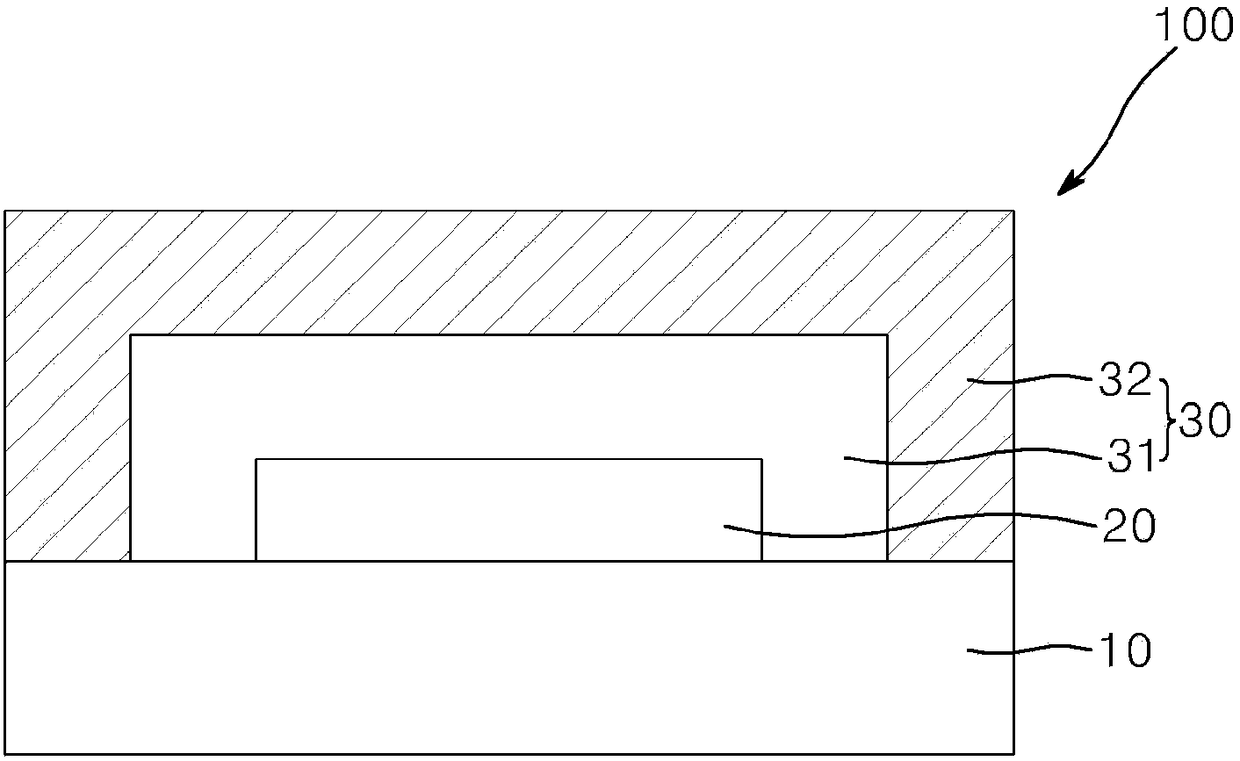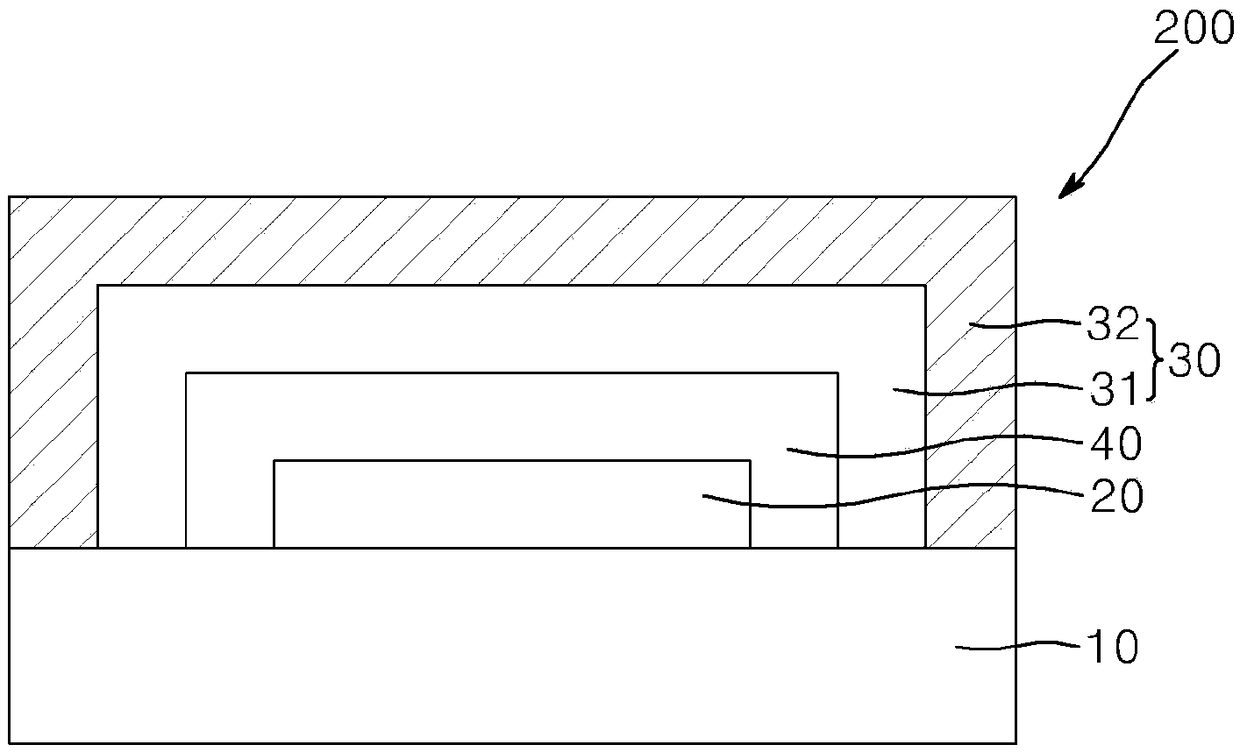Composition for encapsulating organic light emitting element and organic light emitting element display device manufactured therefrom
A technology of an organic light-emitting device and a composition, which is applied in the field of organic light-emitting displays, can solve the problems of light-emitting characteristics and reliability degradation of organic light-emitting devices, and achieve the effect of improving reliability and high light transmittance
- Summary
- Abstract
- Description
- Claims
- Application Information
AI Technical Summary
Problems solved by technology
Method used
Image
Examples
preparation example 1
[0162] In a 1,000ml flask equipped with a cooling tube and a stirrer, place 300ml of ethyl acetate, 21g of 3,3-diphenyl-1,1,5,5-tetramethyltrisiloxane and 43g of allyl alcohol ( Daejung Chemicals & Materials Co., Ltd.), followed by purging with nitrogen for 30 minutes. Subsequently, 72 ppm of Pt-carbon black powder (Aldrich GmbH) was added thereto, then the flask was heated to 80° C. and the components were stirred for 4 hours. The remaining solvent was removed by distillation, whereby a compound was obtained. 71.5 g of the obtained compound and 39 g of triethylamine were sequentially added to 300 ml of methylene chloride, followed by slowly adding 30.2 g of methacryloyl chloride while stirring the mixture at 0°C. The remaining solvent was removed by distillation, thereby obtaining a monomer represented by Formula 4 and having a purity of 95% as determined by HPLC (molecular weight: 584.92 g / mol). (1H NMR: δ7.52, m, 6H; δ7.42, m, 4H; δ6.25, d, 2H; δ6.02, dd, 2H; δ5.82, t, 1H...
preparation example 2
[0166] A monomer represented by Formula 9 was obtained in the same manner as in Preparation Example 1, except that 25 g of 3-phenyl-1,1,3,5,5-pentamethyltrisiloxane (Gelest Inc.) was used Instead of 21 g of 3,3-diphenyl-1,1,5,5-tetramethyltrisiloxane.
[0167]
[0168]
preparation example 3
[0170] In a 1,000 ml flask equipped with cooling tube and stirrer, place 300 ml of ethyl acetate, 25 g of 3-phenyl-1,1,1,3,5,5-hexamethyltrisiloxane (Gelest Inc.) and 47 g of allyl alcohol, followed by nitrogen sparging for 30 minutes. Subsequently, 72 ppm of Pt-carbon black powder (Aldrich GmbH) was added thereto, then the flask was heated to 80° C. and the components were stirred for 4 hours. The remaining solvent was removed by distillation, whereby a compound was obtained. 65.5 g of the obtained compound and 48 g of triethylamine were sequentially added to 300 ml of dichloromethane, followed by slowly adding 31.3 g of methacryloyl chloride while stirring the mixture at 0°C. The remaining solvent was removed by distillation, whereby the monomer represented by Formula 13 was obtained, and had a purity of 97% as determined by HPLC (molecular weight: 410.73 g / mol). (1H NMR: δ7.61, m, 3H: δ7.12, m, 2H: δ6.25, d, 1H: δ6.02, dd, 1H: δ3.87, m, 2H: δ2.82, s, 3H: δ1.54, m, 2H: δ0...
PUM
| Property | Measurement | Unit |
|---|---|---|
| modulus | aaaaa | aaaaa |
| thickness | aaaaa | aaaaa |
| thickness | aaaaa | aaaaa |
Abstract
Description
Claims
Application Information
 Login to View More
Login to View More - R&D
- Intellectual Property
- Life Sciences
- Materials
- Tech Scout
- Unparalleled Data Quality
- Higher Quality Content
- 60% Fewer Hallucinations
Browse by: Latest US Patents, China's latest patents, Technical Efficacy Thesaurus, Application Domain, Technology Topic, Popular Technical Reports.
© 2025 PatSnap. All rights reserved.Legal|Privacy policy|Modern Slavery Act Transparency Statement|Sitemap|About US| Contact US: help@patsnap.com



